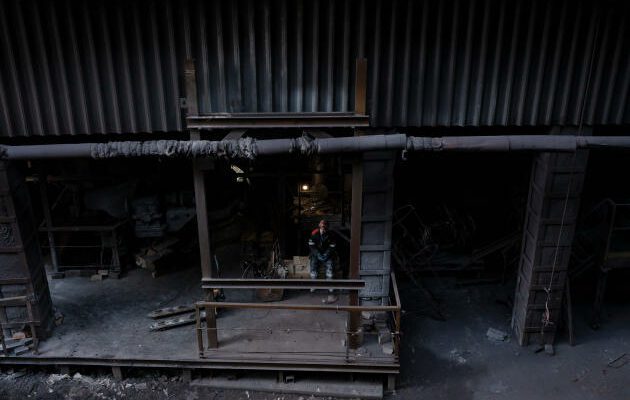Entering Zaporijstal, one of the largest steel factories in Ukraine, in the south of the country, is to enter a huge maze of gray and rusty industrial buildings, from the Soviet era. Workers labor in a building nestled in the middle of the steel complex that employed 10,500 people before the war. The din of machine tools is deafening. He forces Roman, line manager for years, to speak in a loud, deep voice.
For more than ten months, the factory, located at the entrance to the city of Zaporizhia, has been trying to adapt to the developments of the invasion unleashed by Russia. After being closed due to the proximity of the front line that crosses the region, still partially occupied by Russian forces, the site reopened in April 2022. According to the general manager, Oleksandr Myronenko, who receives in a long meeting room, “about 5,000” workers returned to their workstations. The others, inactive, receive ” two-thirds of their salary”.
The activity has adjusted to the many new constraints: the factory is running at 50% of its total production capacity. At the same time, employees have developed new skills and some now work to help the Ukrainian army. Zaporijstal is not a special case. The metallurgical sector, which represented between 12% and 15% of the country’s GDP, is now mobilizing its resources for the war effort.
Resilient and Survival
This support, the line manager, Roman, calls it work ” parallel “. At the back of the warehouse, a worker is cutting thick steel plates into rectangular shapes behind a huge machine tool. These thousands of plates will then be slipped into bulletproof vests for soldiers fighting on the front lines. After months of work, the techniques have improved. “We found an even more resistant material that weighs 4 kilos”, explains the line manager, pointing to old stacks of 6-kilo plates, covered in dust, waiting to be potentially used for the day when “it will be really complicated”.
On the other side of the workshop, men pilot machines responsible for twisting other steel plates. The latter, glued on top of each other, are used to form bunkers for the soldiers, kinds of long tubes intended to be buried in the ground. For these underground shelters, wooden planks were attached to the structure by chains, as a bed for the soldiers. At the start of the Russian invasion, the workers had started by welding iron crosses to stop the advancing tanks from Moscow.
You have 59.09% of this article left to read. The following is for subscribers only.
